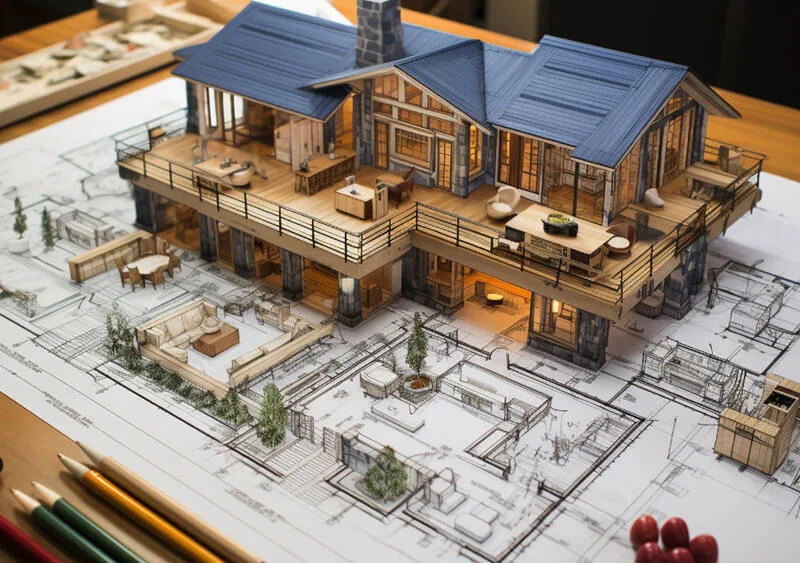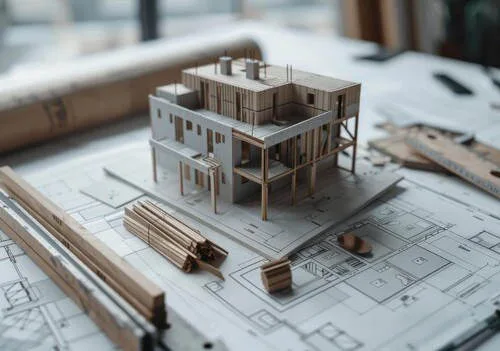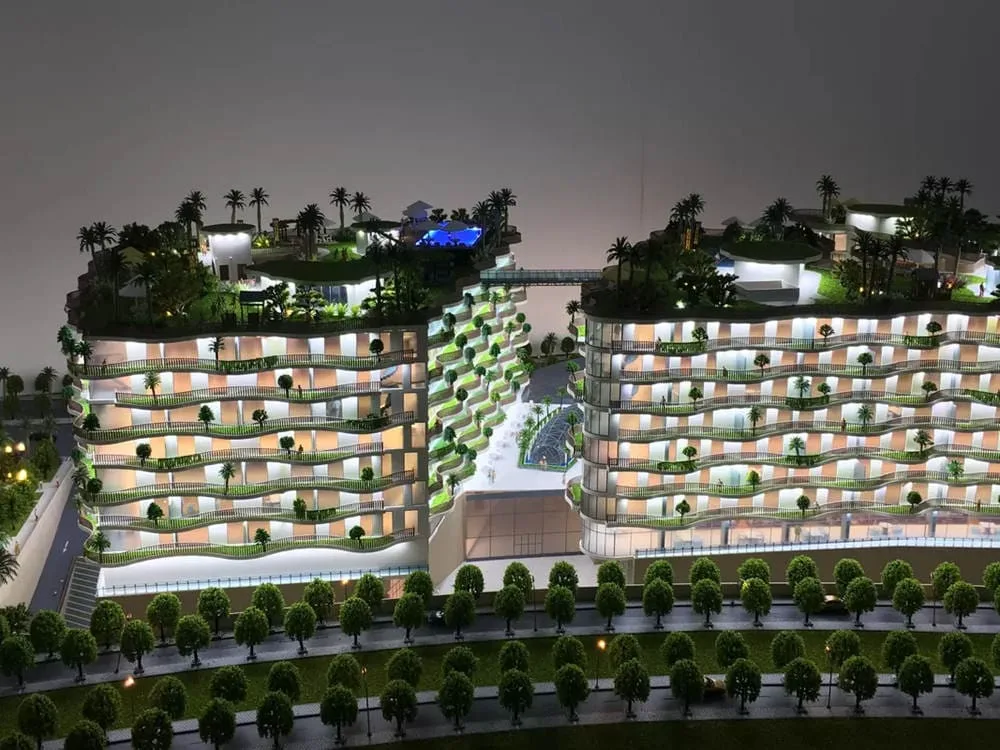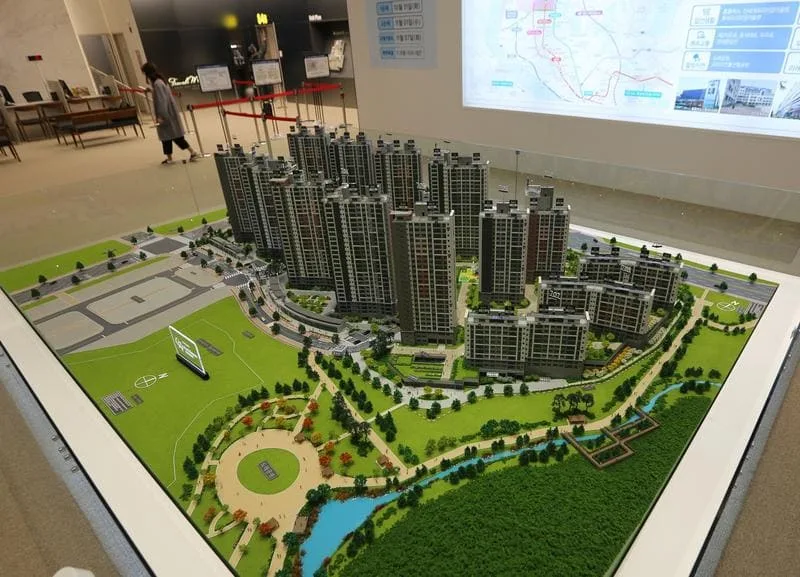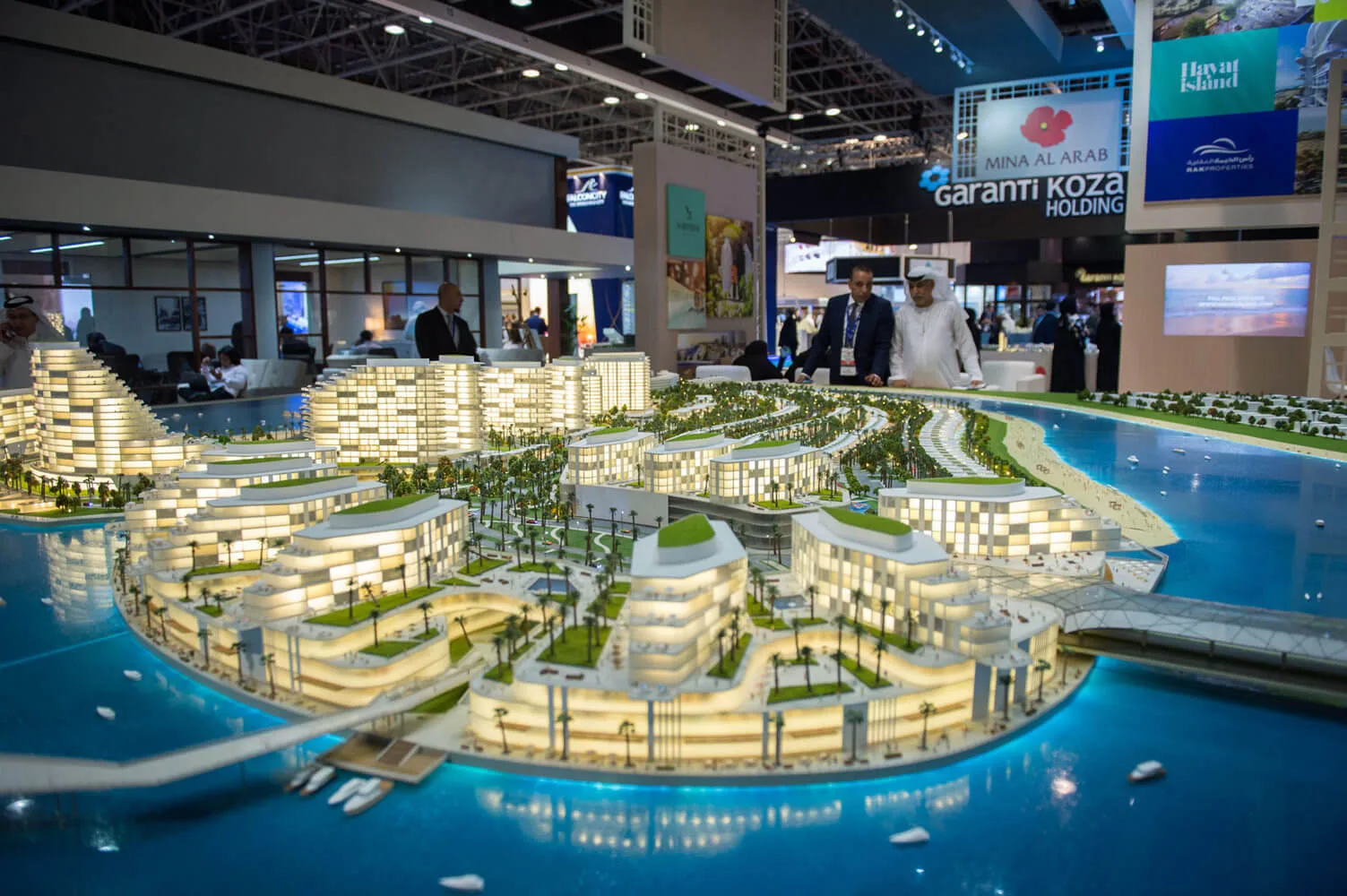Immobiliendesignmodelle, auch bekannt als Immobiliendesignmodelle, sind Miniaturpräparate geplanter oder bestehender Immobilien. Sie dienen als leistungsstarke Visualisierungsinstrumente, die architektonische Blaupausen in greifbare Umstände verwandeln, dreidimensionale Formen. Diese Modelle bieten eine einzigartige Möglichkeit, eine Immobilie zu erleben, bevor sie erstellt wurde oder ihre Funktionen auf faszinierende Weise präsentieren. Von weitläufigen Wohnständen bis hin zu komplexen kommerziellen Entwicklungen, Diese Miniatur -Wunder spielen eine entscheidende Rolle in der Immobilienbranche. Dieser Artikel befasst sich mit der Welt der Immobiliendesignmodelle, Erforschung ihrer unterschiedlichen Typen, der komplizierte Entstehungsprozess, welche Vorteile sie bieten, und ihre Bedeutung in der Immobilienlandschaft. Ob Sie Entwickler sind, Architekt, potenzieller Käufer, oder einfach fasziniert von der Kunst der Miniaturherstellung, Dieser Leitfaden bietet Ihnen wertvolle Erkenntnisse.
Inhaltsverzeichnis
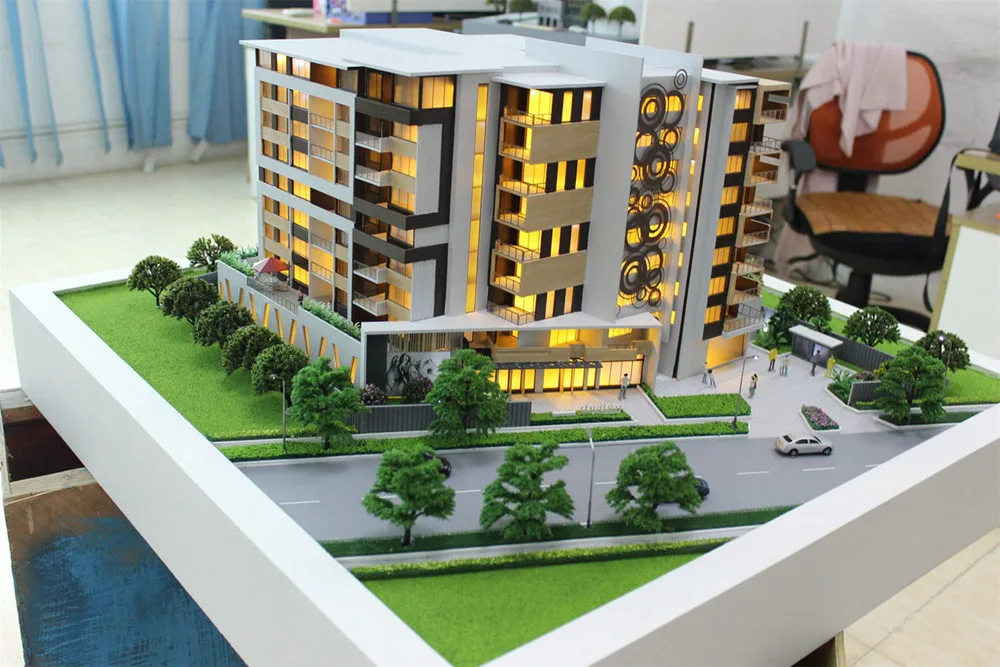
Was ist ein Immobiliendesignmodell? Definition seines Zwecks und Werts
Ein Immobiliendesignmodell ist greifbar, verkleinerte Darstellung eines Immobilienbesitzes verkleinert. Es übersetzt Architekturpläne und Zeichnungen in eine dreidimensionale Form, Bereitstellung einer klaren und ansprechenden Möglichkeit, ein Projekt zu visualisieren. Ob für ein weitläufiges Wohngebiet, Ein Luxus -Eigentumswohnungskomplex, oder eine kommerzielle Entwicklung, Diese Modelle dienen als unschätzbare Werkzeuge für die Kommunikation, Planung, und Marketing. Sie bieten eine einzigartige Gelegenheit, das Layout einer Immobilie zu erleben, Design, und Funktionen, bevor es in der realen Welt existiert.
Diese Miniaturstaunen gehen über einfache Darstellungen hinaus; Sie dienen als interaktive Instrumente, die Diskussionen und Entscheidungen unter den Stakeholdern erleichtern. Sie können verwendet werden, um Sehlinien zu studieren, Bewertung räumlicher Beziehungen, und bewerten Sie die Ästhetik des gesamten Designs. Für potenzielle Käufer, Ein Immobiliendesign-Modell bietet einen faszinierenden Einblick in ihr zukünftiges Zuhause oder ihre zukünftige Investition, während für Entwickler, Sie bieten ein überzeugendes Marketinginstrument, um ihre Vision zu präsentieren. Ihr Wert liegt darin, die Lücke zwischen abstrakten Plänen und konkreter Realität zu schließen.
Arten von Estate-Design-Modellen: Von konzeptionell bis interaktiv
Immobilienmodelle kommen in den unterschiedlichsten Formen vor, Jeder dient einem bestimmten Zweck. Konzeptionelle Modelle, Typischerweise aus Grundmaterialien wie Schaumstoff oder Pappe gefertigt, werden in den frühen Phasen des Entwurfs verwendet, um die Masse zu untersuchen, bilden, und räumliche Anordnungen. Präsentationsmodelle, auf der anderen Seite, sind akribisch detailliert und fertig, Präsentation des endgültigen Entwurfs gegenüber potenziellen Käufern oder Investoren.
Arbeitsmodelle können interaktive Elemente enthalten, wie Beleuchtung, Öffnen von Türen und Fenstern, oder sogar Landschaftsgestaltungselemente, die beleuchten oder sich bewegen. Diese interaktiven Elemente sorgen für eine weitere Ebene des Engagements und des Realismus, insbesondere bei komplexen Projekten. Die Wahl des Modelltyps hängt vom Projektstadium ab, Budget, und die spezifischen Informationen, die übermittelt werden müssen. Manchmal einfach Immobiliendesignmodelle können effektiver sein als komplexe.
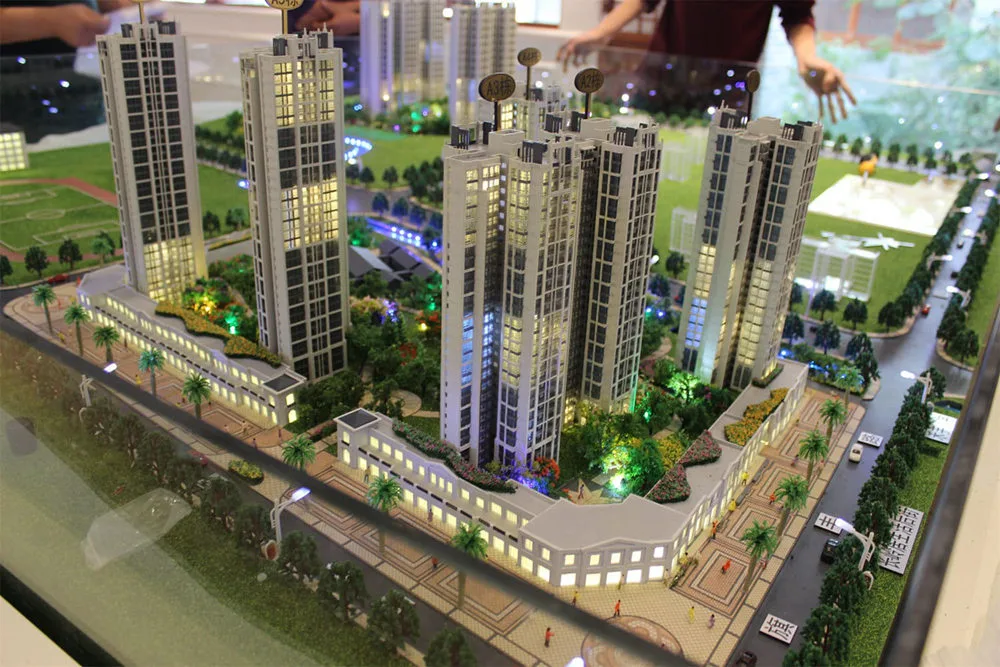
Der Schöpfungsprozess: Von der Blaupause zum Miniatur-Meisterwerk
Die Erstellung eines Immobilienentwurfsmodells ist ein sorgfältiger Prozess, der mehrere wichtige Phasen umfasst. Der Prozess beginnt mit dem Verständnis der Architekturpläne und deren Umsetzung in einen skalierbaren 3D-Entwurf. Dabei kommt häufig computergestütztes Design zum Einsatz (CAD) Software zur Erstellung eines digitalen Modells, welches als Blaupause für das physikalische Modell dient. Die Materialien werden dann sorgfältig auf der Grundlage des gewünschten Detaillierungsgrades ausgewählt, Haltbarkeit, und Budget.
Nächste, Der Herstellungsprozess beginnt, mit Schneiden verbunden, Gestaltung, und Montage einzelner Komponenten. Dies kann Laserschneiden für Präzision umfassen, 3D-Druck für komplexe Formen, oder traditionelle Handwerkstechniken für komplizierte Details. Das zusammengebaute Modell wird dann sorgfältig fertiggestellt, was auch Malen beinhalten könnte, Texturierung, Hinzufügen von Landschaftsbauelementen, Beleuchtung installieren, und sicherzustellen, dass jedes Detail mit der architektonischen Vision übereinstimmt. Erstellen einer hochwertigen Immobilienmodell erfordert Geduld, Präzision, und ein scharfes Auge für Maßstab und Proportionen.
Materialien und Techniken: Die Bausteine der Miniaturwelten
Bei der Erstellung von Siedlungsentwurfsmodellen kommen verschiedenste Materialien zum Einsatz, Jedes bietet einzigartige Eigenschaften und ästhetische Qualitäten. Gemeinsame Materialien umfassen Holz, Plastik, Acryl, Schaumstoffplatte, Karton, und verschiedene Metalle. Die Wahl der Materialien hängt unter anderem vom Verwendungszweck des Modells ab, Detaillierungsgrad, Haltbarkeitsanforderungen, und Budgetbeschränkungen.
Während des Herstellungsprozesses kommen verschiedene Techniken zum Einsatz, von traditioneller Handarbeit bis hin zu fortschrittlichen digitalen Fertigungsmethoden. Laserschneiden und 3D-Druck erfreuen sich aufgrund ihrer Präzision und Fähigkeit zur Erstellung komplexer Formen immer größerer Beliebtheit. Handwerkstechniken, wie zum Beispiel Schnitzen, Bildhauerei, und Malerei, bleiben für das Hinzufügen komplizierter Details und künstlerischer Veredelungen unerlässlich. Die Auswahl der Materialien und Techniken ist entscheidend, um im Endergebnis das gewünschte Maß an Realismus und optischer Attraktivität zu erreichen Immobiliendesignmodell.
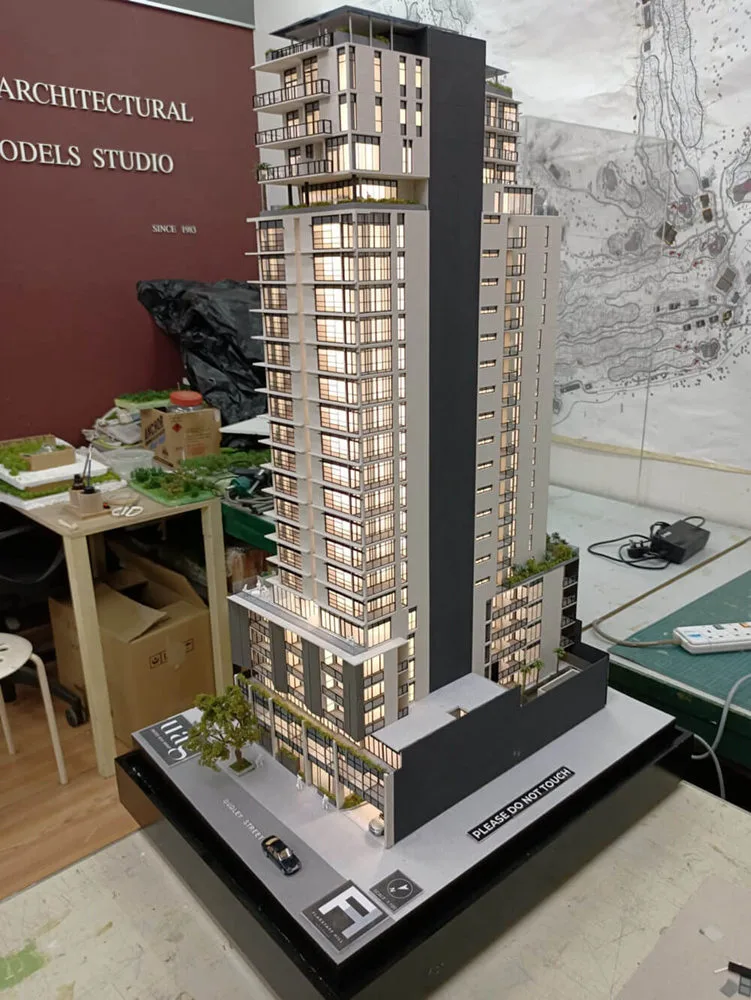
Maßstab und Detail: Balance zwischen Realismus und Praktikabilität
Skala, stellt das Verhältnis zwischen dem Modell und der tatsächlichen Eigenschaft dar, spielt eine entscheidende Rolle für die Wirksamkeit des Modells. Gemeinsame Skalen für Immobiliendesignmodelle reichen von 1:50 Zu 1:500, Die Auswahl richtet sich nach der Größe der Immobilie, der Zweck des Modells, und der gewünschte Detaillierungsgrad.
Der Detaillierungsgrad eines Modells sollte ein Gleichgewicht zwischen Realismus und Praktikabilität gewährleisten. Hochdetaillierte Modelle zeigen feine architektonische Merkmale, Landschaftsbauelemente, und sogar Inneneinrichtung, während einfachere Modelle sich auf die Gesamtform und Masse konzentrieren. Der geeignete Detaillierungsgrad hängt von der Zielgruppe und dem Verwendungszweck des Modells ab. Manchmal, Zu viele Details können den Betrachter überfordern, während zu wenig die Essenz des Designs möglicherweise nicht effektiv vermittelt. Erstellen eines Nachlassdesignmodells erfordert eine sorgfältige Betrachtung von Maßstab und Details.
Vorteile der Verwendung von Estate-Design-Modellen: Ein leistungsstarkes Tool für Immobilien
Immobiliendesignmodelle bieten eine Vielzahl von Vorteilen in der Immobilienbranche. Sie verbessern die Visualisierung, Umwandlung zweidimensionaler Pläne in greifbare Formen, die leichter zu verstehen und zu schätzen sind. Dies ermöglicht es potenziellen Käufern, die räumliche Anordnung zu erfassen, architektonische Besonderheiten, und Gesamtästhetik des Designs viel effektiver als Zeichnungen oder virtuelle Rundgänge.
Außerdem, Modelle dienen als leistungsstarke Kommunikationswerkzeuge, Erleichterung klarer und prägnanter Diskussionen zwischen Entwicklern, Architekten, Kunden, und Investoren. Sie bieten eine gemeinsame visuelle Sprache, die hilft, Missverständnisse zu vermeiden und die gemeinsame Entscheidungsfindung zu fördern. Das frühzeitige Erkennen potenzieller Konstruktionsfehler oder Konflikte mithilfe eines Modells kann zu erheblichen Kosteneinsparungen während der Bauphase führen. Hochwertig Immobiliendesignmodelle steigern auch die Marketingbemühungen, einen unvergesslichen Eindruck zu hinterlassen und das Interesse an einer Immobilie zu steigern.
Bewerbungen im Immobilienbereich: Vom Marketing bis zur Designentwicklung
Nachlassentwurfsmodelle finden im gesamten Immobilienentwicklungsprozess vielfältige Anwendung. Im Marketing, Sie dienen als auffällige Mittelstücke in Verkaufsbüros, Ausstellungen, und Präsentationen, Sie begeistern potenzielle Käufer und Investoren. Sie bieten eine greifbare Darstellung des geplanten Projekts, Spannung erzeugen und die Marktfähigkeit steigern.
Während der Designentwicklungsphase, Architekten verwenden Modelle, um Sichtlinien zu untersuchen, räumliche Beziehungen, und massieren, Wir helfen ihnen, den Entwurf zu verfeinern, bevor mit dem Bau begonnen wird. Modelle sind auch wertvolle Werkzeuge für die Stadtplanung und das gesellschaftliche Engagement, So können Stakeholder die Auswirkungen eines Projekts auf die Umgebung visualisieren. Dies erleichtert die Kommunikation und Zusammenarbeit, Dies führt zu einer fundierteren Entscheidungsfindung und einer größeren Akzeptanz in der Gemeinschaft. Viele Immobiliendesignmodelle dienen der Präsentation anstehender Entwicklungen.
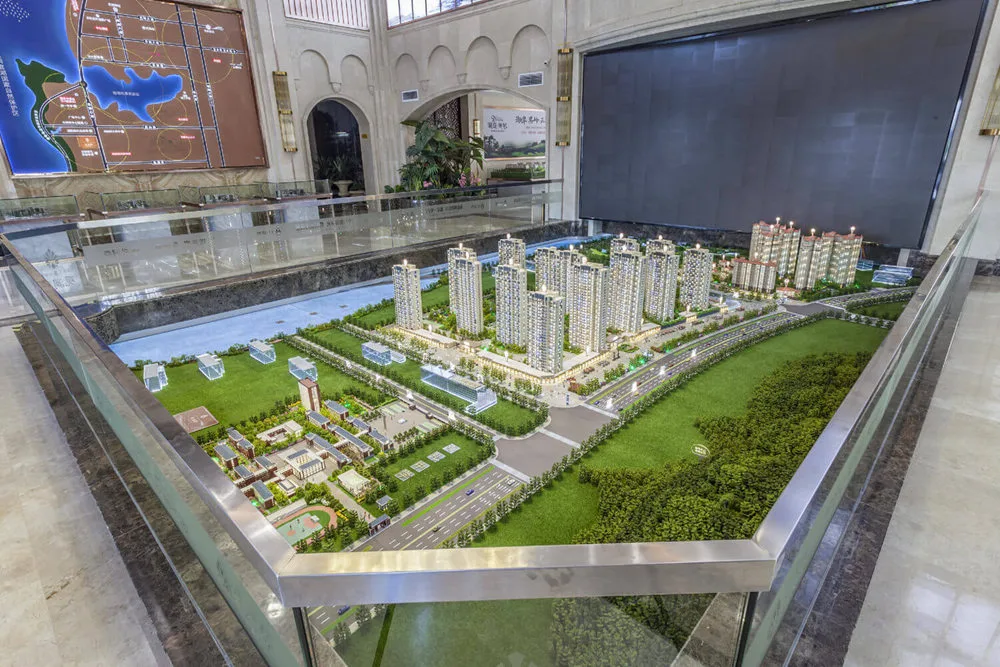
Auswahl eines Modellbauers: Fachwissen und Zusammenarbeit
Die Auswahl des richtigen Modellbauers ist ein entscheidender Schritt zur Gewährleistung einer hohen Qualität, genau, und effektiv Immobilienmodell. Suchen Sie nach einem Modellbauer mit nachgewiesener Erfolgsbilanz, nachweisbare Fachkenntnisse in verschiedenen Modelltypen und Maßstäben, und ein Portfolio, das ihre Handwerkskunst zeigt. Erkundigen Sie sich nach ihrem Prozess, Vom Verständnis architektonischer Pläne bis hin zur Materialauswahl und Herstellungstechniken.
Effektive Kommunikation und Zusammenarbeit sind für eine erfolgreiche Partnerschaft unerlässlich. Der Modellbauer sollte reaktionsschnell sein, aufmerksam auf Ihre spezifischen Bedürfnisse und Ziele, und in der Lage, kreative Lösungen für Designherausforderungen anzubieten. Ein kollaborativer Ansatz, Dazu gehören regelmäßige Aktualisierungen und Feedback während des gesamten Erstellungsprozesses, stellt sicher, dass das Endprodukt genau Ihre Vision widerspiegelt und Ihren Erwartungen entspricht. Für komplexe Projekte, Zusammenarbeit mit einem erfahrenen Architekturmodell -Unternehmensunternehmen ist oft der beste Ansatz.
Kosten und Budgetierung: In Miniaturerfolg investieren
Die Kosten für ein Siedlungsentwurfsmodell können je nach Faktoren wie der Größe erheblich variieren, Detaillierungsgrad, verwendete Materialien, Komplexität des Designs, und die Gebühren des Modellbauers. Einfache konzeptionelle Modelle könnten relativ erschwinglich sein, während groß, Hochdetaillierte Präsentationsmodelle können eine erhebliche Investition darstellen. Legen Sie zu Beginn des Projekts ein klares Budget fest, das als Orientierung für Ihre Entscheidungen dient.
Besprechen Sie Ihr Budget offen mit dem Modellbauer Ihrer Wahl, um Optionen zu erkunden, die Ihren finanziellen Einschränkungen entsprechen. Sie können Anleitung zu materiellen Auswahlmöglichkeiten und Designänderungen geben, die die Kosten optimieren können, ohne die Qualität zu beeinträchtigen. Betrachten Sie das Modell als eine Investition, die im Hinblick auf den Marketingerfolg erhebliche Renditen erzielen kann, Verbesserte Kommunikation, und verbesserte Designentwicklung. Eine gut gemachte Immobiliendesignmodell Kann ein wertvolles Gut für jedes Immobilienprojekt sein. Kontaktieren Sie uns für detaillierte Kontaktieren Sie uns Information.
Anzeige und Präsentation: Präsentation Ihres Miniatur -Meisterwerks
So wie Sie Ihre anzeigen Immobiliendesignmodell kann seine Wirksamkeit stark beeinflussen. Eine benutzerdefinierte Display-Hülle, Entwickelt, um das Modell vor Staub und Schäden zu schützen und gleichzeitig seine visuelle Anziehungskraft zu verbessern, ist oft eine lohnende Investition. Betrachten Sie Faktoren wie Beleuchtung, Hintergrund, und Platzierung zum Erstellen einer Präsentation, die die besten Funktionen des Modells hervorhebt.
Für Präsentationen und Ausstellungen, Denken Sie über den Bewegungsfluss rund um das Modell nach, um sicherzustellen, dass die Zuschauer es aus allen Blickwinkeln betrachten können. Verwenden Sie geeignete Beleuchtung, um Glanzlichter und Schatten zu erzeugen, die die Details des Modells hervorheben. Erwägen Sie das Hinzufügen von Beschilderungen oder interaktiven Elementen, um Kontext bereitzustellen und die Zuschauer einzubeziehen. Eine durchdachte Präsentation kann das Modell in ein faszinierendes Herzstück verwandeln, das einen bleibenden Eindruck hinterlässt. Architekturmodelle bauen ist nur ein Teil des Prozesses; Ebenso wichtig ist es, sie effektiv zu präsentieren.
Pflege und Wartung: Schützen Sie Ihre Investition
Die richtige Pflege und Wartung ist unerlässlich für die Erhaltung der Schönheit und Langlebigkeit Ihres Immobilienmodell. Regelmäßiges Abstauben mit weichen Bürsten oder Druckluft kann Staubansammlungen vorbeugen und empfindliche Details schützen. Vermeiden Sie nach Möglichkeit den direkten Umgang mit dem Modell, um das Risiko einer Beschädigung zu minimieren.
Speichern Sie das Modell in einer klimatisierten Umgebung, vor direkter Sonneneinstrahlung schützen, extreme Temperaturen, und hohe Luftfeuchtigkeit. Überprüfen Sie das Modell regelmäßig auf Anzeichen von Schäden oder Verschlechterung, und wenden Sie sich an Ihren Modellhersteller, um bei Bedarf Ratschläge zur Reparatur oder Wiederherstellung zu erhalten. Ein gut gepflegtes Modell kann jahrelang dauern, als wertvolles Gut für zukünftige Präsentationen und Marketing -Bemühungen dienen. Immobiliendesignmodelle, mit richtiger Sorgfalt, werden dauerhafte Erinnerungen an Design Vision.
Die Zukunft der Immobiliendesignmodelle: Technologie und Innovation
Die Zukunft von Immobiliendesignmodellen ist mit technologischen Fortschritten verflochten. 3D Druck- und andere digitale Herstellungstechniken bieten eine erhöhte Präzision und Komplexität, Ermöglichen der Erstellung von noch komplizierteren und realistischeren Modellen. Augmented Reality (AR) und virtuelle Realität (VR) transformieren, wie Kunden mit Modellen interagieren, Erstellen von immersiven Erlebnissen, die es ihnen ermöglichen, die Eigenschaft virtuell einzusteigen.
Nachhaltige Materialien und Praktiken werden bei der Modellierung immer wichtiger, Reflexion der wachsenden Betonung der Umweltverantwortung durch die Immobilienbranche,. Wir können erwarten, dass mehr Modelle interaktive Elemente enthalten, wie Beleuchtung, Klang, und Bewegung, das verbessert das Engagement und vermittelt Informationen auf dynamische Weise. Da sich die Technologie ständig weiterentwickelt, So wird auch die Kunst und Wissenschaft von Immobiliendesignmodellbau. Kontaktieren Sie uns Für die neueste, wie die Technologie das Feld prägt.
Modernes Nachlassdesign: Widerspiegeln zeitgenössische Trends
Das moderne Immobiliendesign betont saubere Linien, Offene Grundrisse, und eine nahtlose Integration in die umgebende Landschaft. Immobiliendesignmodelle Spielen Sie eine entscheidende Rolle bei der Präsentation dieser Designmerkmale. Modelle unterstreichen die Verwendung von natürlichen Licht, die Verbindung zwischen Innen- und Außenräumen, und die Einbeziehung nachhaltiger Baumaterialien. Sie ermöglichen es Kunden, den Fluss und die Funktionalität moderner Designs zu erleben, bevor sie gebaut werden.
Beim modernen Immobiliendesign stehen Energieeffizienz und Umweltbewusstsein oft im Vordergrund, Merkmale, die in einem gut gestalteten Modell wirkungsvoll hervorgehoben werden können. Modelle können die Integration von Solarpaneelen demonstrieren, Gründächer, und andere nachhaltige Technologien. Sie können auch die sorgfältige Landschaftsgestaltung und Standortplanung darstellen, die für die moderne Siedlungsgestaltung von wesentlicher Bedeutung sind. Indem wir diese Elemente zur Schau stellen, Modelle helfen Kunden, den Wert und die Vorteile zeitgenössischer Designansätze zu verstehen und zu schätzen. Kontaktieren Sie uns für Informationen zu moderne Immobiliendesign-Modelle.
Mini-Kombi-Design: Maximierung von Platz und Funktionalität
Das Mini -Immobiliendesign konzentriert sich auf die Schaffung funktionaler und luxuriöser Wohnräume innerhalb eines kleineren Fußabdrucks. Modelle sind in diesem Zusammenhang besonders wertvoll, Während sie Kunden helfen, sich vorzustellen, wie Platz maximiert werden kann und wie Designelemente zum effizienten und komfortablen Leben beitragen können. Immobiliendesignmodelle kann veranschaulichen, wie offen, Multifunktionale Räume, und clevere Speicherlösungen schaffen ein Gefühl der Geräumigkeit in einem kompakten Design.
Mini -Immobiliendesign priorisiert häufig die Qualität vor Quantität, Konzentration auf High-End-Oberflächen und benutzerdefinierte Details. Diese Elemente können wunderschön in einem akribisch gefertigten Modell präsentiert werden. Modelle können die Verwendung von Premium -Materialien hervorheben, Die Integration der Smart -Home -Technologie, und die Schaffung von Wohnbereichen im Freien, die den Wohnraum über die Grenzen des Hauses hinaus ausdehnen. Immobilienmodelle Wirksam den Wert und den Luxus dieser kleineren Kommunizieren vermitteln, aber gut gestaltet, Eigenschaften.
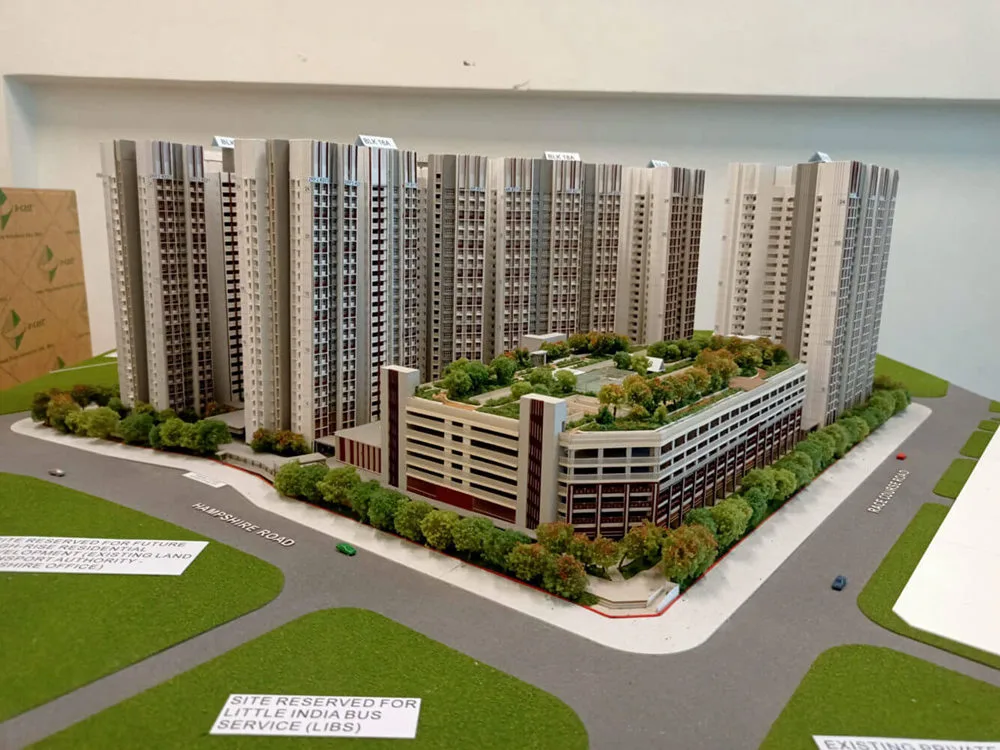
Immobilien -Layout -Design: Planung für optimalen Fluss und Ästhetik
Immobilien -Layout -Design umfasst die Anordnung von Gebäuden, Landschaftsbau, und andere Elemente innerhalb der Eigenschaftsgrenzen. Modelle spielen eine entscheidende Rolle bei der Visualisierung des Gesamtlayouts und der Bewertung der Interaktion verschiedener Komponenten. Sie helfen Designern und Kunden, den Bewegungsfluss zu bewerten, die Beziehung zwischen Innen- und Außenräumen, und die visuellen Auswirkungen des Designs aus verschiedenen Aussichtspunkten. Modelle erwecken das Layoutdesign zum Leben, Ermöglichen Sie ein besseres Verständnis dafür, wie das Anwesen in Wirklichkeit funktionieren und sich anfühlen wird.
Modelle sind von unschätzbarem Wert für die Optimierung der Site -Nutzung, Stellen Sie sicher, dass das Layout die Ansichten maximiert, Privatsphäre, und Zugang zu natürlichem Licht. Sie können demonstrieren, wie Landschaftsgestaltungselemente, wie Gärten, Gehwege, und Wasserspiele, in die gebaute Umgebung integrieren. Immobiliendesignmodelle kann auch dazu beitragen, potenzielle Herausforderungen oder Chancen im Zusammenhang mit der Topographie zu ermitteln, Drainage, und Zugang. Durch die umfassende Übersicht über das Nachlasse -Layout, Modelle ermöglichen die fundierte Entscheidungsfindung und tragen zur Schaffung harmonischer und funktionaler Räume bei.
Abschluss
Immobiliendesignmodelle sind unschätzbare Instrumente in der Immobilienbranche, Anbieten von konkreten Darstellungen architektonischer Visionen. Sie verbessern die Kommunikation, Erleichterung der Planung, und stärken Marketingbemühungen, indem Sie eine klare und engagierte Möglichkeit bieten, eine Immobilie zu erleben, bevor es aufgebaut wurde. Von konzeptionellen Entwürfen bis hin zu detaillierten Präsentationen, Diese Modelle spielen eine wichtige Rolle in jeder Phase der Immobilienentwicklung. Indem Sie ihre Typen verstehen, Schöpfungsprozess, Vorteile, und Anwendungen, Entwickler, Architekten, und Kunden können die Leistungsfähigkeit von Immobiliendesignmodellen nutzen, um größeren Erfolg zu erzielen. Ob es um die Präsentation einer Luxusresidenz geht, ein Gewerbekomplex, oder eine geplante Gemeinschaft, Ein gut ausgearbeitetes Modell kann der Schlüssel zur Verwirklichung einer Vision sein.
Wichtige Erkenntnisse:
- Siedlungsentwurfsmodelle übersetzen Architekturpläne in greifbare 3D-Formen.
- Verschiedene Modelltypen decken unterschiedliche Phasen des Design- und Marketingprozesses ab.
- Die Erstellung eines Modells erfordert eine genaue Planung, Materialauswahl, und sorgfältige Fertigung.
- Maßstab und Detailtreue sollten ein Gleichgewicht zwischen Realismus, Praktikabilität und Verwendungszweck gewährleisten.
- Modelle verbessern die Visualisierung, Kommunikation, und Entscheidungsfindung im Immobilienbereich.
- Sie sind leistungsstarke Marketinginstrumente, Designentwicklung, und gemeinschaftliches Engagement.
- Die Auswahl des richtigen Modellbauers erfordert eine sorgfältige Abwägung von Fachwissen und Zusammenarbeit.
- Kosten und Budgetierung sollten an den Projektzielen und der Modellkomplexität ausgerichtet sein.
- Eine wirkungsvolle Präsentation und Präsentation verstärken die Wirkung des Modells.
- Die richtige Pflege und Wartung sichert die Langlebigkeit und den Wert des Modells.
- Technologie verändert die Zukunft der Immobiliendesignmodelle.
- Das moderne Immobiliendesign betont saubere Linien, Freiflächen, und Integration mit der Natur.
- Das Mini-Kombi-Design maximiert Platz und Funktionalität auf kleinerer Stellfläche.
- Immobilien -Layout -Design, unterstützt durch Modelle, optimiert den Durchfluss, Ästhetik, und Standortnutzung.
Bereit, Ihr nächstes Immobilienprojekt zu visualisieren? Kontaktieren Sie uns Besprechen Sie noch heute Ihre Vision und entdecken Sie, wie unsere Expertise in Immobiliendesignmodellen Ihr Projekt zum Leben erwecken kann.


